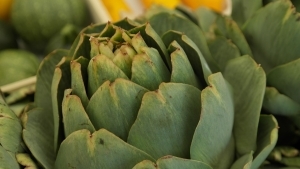Tapenade
I first tasted tapenade over twenty years ago in Wellington. I was working at an idyllic restaurant called Giverny and my chef Martin Bosley would use it to stuff salmon. I was hooked from the first fingerful on my teenage lips, because tapenade is something that grabs you, that gives you a salty thirst from its oily, black and beautiful depths. I was a long way from Provence, but I already had a taste for her classics. In Provence, tapenade always appears at aperitif time, on croutons, with crudites or with eggs. There are notable exceptions. At Le Grain de Sel in Cogolin, chef Philippe Audibert serves warm roast peppers with tapenade in perfect simplicity, while further along the coast in Monte Carlo, Alain Ducasse spreads tapenade on red mullet, the dish that inspired my sardines. To make your shopping as practical as possible, I’ve tested the recipes using very standard black olives, either a la grecque or in herbes de Provence. These are strongly flavoured and stored without any oil or brine. They’ll be in bowls at your deli or in jars of 230g–270g at most supermarkets. The easiest way to remove the stones is to pinch the fat end of the olive and squeeze them out with your index finger and thumb. If you like the taste of a certain olive, use that. I love tiny Taggiasca olives, but they are easily overpowered by the capers that give tapenade its name, from tapeno in Old Provencal.
I am loyal to the name and its provenance so I can’t bear to leave them out, but whether the tapenade would miss them, I’m not so sure. Feel free to try. I know it’s because they’re salty, but I’ve been quite amazed at how many kids like olives. More so when it is made into tapenade and mixed into meals like my fritters and filo pie. If you think your kids will find the tapenade too strong, try making it with milder olives – gentle little green ones or the tiny Nicoise olives.
Makes 21 tbsp; AT LEAST 8 servings
Prep ahead. Keeps in the fridge for at least 6 months (see storage)
Prep/cooking 10–15 mins
Active time 10–15 mins
Ingredients
- 230–270g black olives, stones removed (about 200g stoned weight)
- 1 tbsp small salted capers, rinsed
- 2 salted anchovy fillets
- 1 garlic clove, peeled and crushed
- 4–6 tbsp extra virgin olive
- oil, plus extra to cover
Put all of the ingredients into a blender. Now blend together for as long or as little as you like, depending on whether you prefer a chunky or smooth texture.
Spoon the tapenade into jars. Cover the top completely with a thin layer of extra virgin olive oil. Seal the jars with lids.
Storage
Use small sterilised jars or clean plastic containers. The key to storage is keeping air away from the tapenade. Tap the bottoms of the jars to ensure there are no air bubbles and leave 1cm at the top of the jar for a good layer of olive oil. Pour the olive oil over the top of the tapenade to seal it. Cover the jars first with cling film, then with a lid. Store in the fridge. If you use some but not all of the tapenade, it’s best to put the rest in a smaller jar. If you don’t have one, clean around the exposed sides of the jar with kitchen paper. Cover the remaining tapenade with a fresh layer of oil. Unopened jars will keep for at least 6 months. Once a jar is opened, it will still keep well in the fridge for several weeks.


